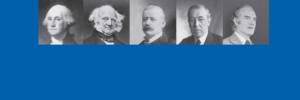Documents and Debates: Labor, Servitude and Slavery
Today’s post is the latest in a series of articles highlighting the print and audio version of the twenty-nine chapters in our Core Documents Collection: Documents and Debates in American History and Government. Today’s featured topic, Chapter 3: Labor, Servitude, and Slavery, describes the Virginia colony’s often brutal path to a race-based system of chattel slavery in the 17th century. The documents in the chapter address the essential question high school students of American history frequently raise about the colonial era. Exactly how and why did the British colonies adopt slavery in Colonial America?
Below is a list of documents in this chapter.
- Indenture between the four Adventurers and Robert Coopy of North Nibley, 1619
- Richard Frethorne to His Parents, March 20 and April 2–3, 1623
- George Alsop, The Necessariness of Servitude Proved, 1666
- Virginia Laws Related to Slavery
- Robert Beverley, Of the Servants and Slaves in Virginia, 1722
The Virginia colony, founded in 1607, faced numerous obstacles to becoming a stable settlement, perhaps most infamously, the preference of the earliest adventurers for treasure hunting rather than the type of hard labor necessary to carve homes out of the wilderness. By 1614, when colonist John Rolfe had established the first commercially viable tobacco plantation in the region, it had become clear that the colony’s success would depend upon hard agricultural labor… and that much of it would be unfree, conducted either by indentured or enslaved persons.
Indentured servants, men and women contracted to work for a specific individual for a stated number of years. In return, they received free passage to Virginia, food and clothing rations, and some form of training that would allow them to make their way in the world at the end of their indenture agreement. Documents A-C in this chapter demonstrate the use of indentures in the early years of the Virginia colony. Document A captures the terms found in a typical contract of indenture. In Document B, recently arrived indenture Richard Frethorne tells a heart-wrenching tale of his struggle to survive.
The second class of unfree labor consisted of slaves. Because the colonists’ relations with the neighboring indigenous people were strained and violent, some of the first unfree laborers at Jamestown were slave hostages captured during clashes with the local native population. The first slaves from Africa arrived at Jamestown in 1619. Gradually, the enslavement became exclusively restricted to African-Americans. By 1670, the colony was beginning to enact laws designating the boundaries of slavery. By 1722, enslaved persons were defined by race and the status of their mother. If the mother was an enslaved person, so were her children.
In Chapter 3: Labor, Servitude, and Slavery, students examine the debate over questions facing 17th century Virginians about the status of unfree laborers. Questions such as: Who can be enslaved, under what conditions and why? How can enslavement be justified? Could the land be made profitable without slaves?



